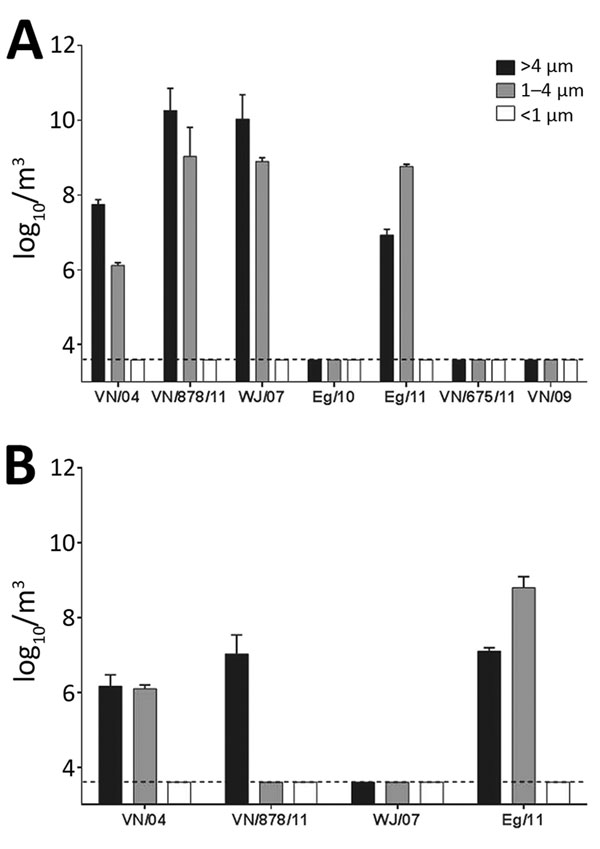Volume 23, Number 11—November 2017
Research
Airborne Transmission of Highly Pathogenic Influenza Virus during Processing of Infected Poultry
Figure 2

Figure 2. Highly pathogenic avian influenza virus isolation from air samples collected using cyclone air sampler during simulated slaughter of infected chickens (A) and ducks (B) in study of airborne transmission of highly pathogenic influenza virus during processing of infected poultry. Detection of virus was attempted in 3 different airborne particle sizes. Error bars indicate virus recovery from >2 repeats per run. Dashed lines indicate limit of detection by virus isolation of 3.6 log10 mean egg infectious dose/m3 air sampled. Isolate names are as given in Table 1.
1Current affiliation: Animal and Plant Quarantine Agency, Gimcheon-si, South Korea.
Page created: October 26, 2017
Page updated: October 26, 2017
Page reviewed: October 26, 2017
The conclusions, findings, and opinions expressed by authors contributing to this journal do not necessarily reflect the official position of the U.S. Department of Health and Human Services, the Public Health Service, the Centers for Disease Control and Prevention, or the authors' affiliated institutions. Use of trade names is for identification only and does not imply endorsement by any of the groups named above.